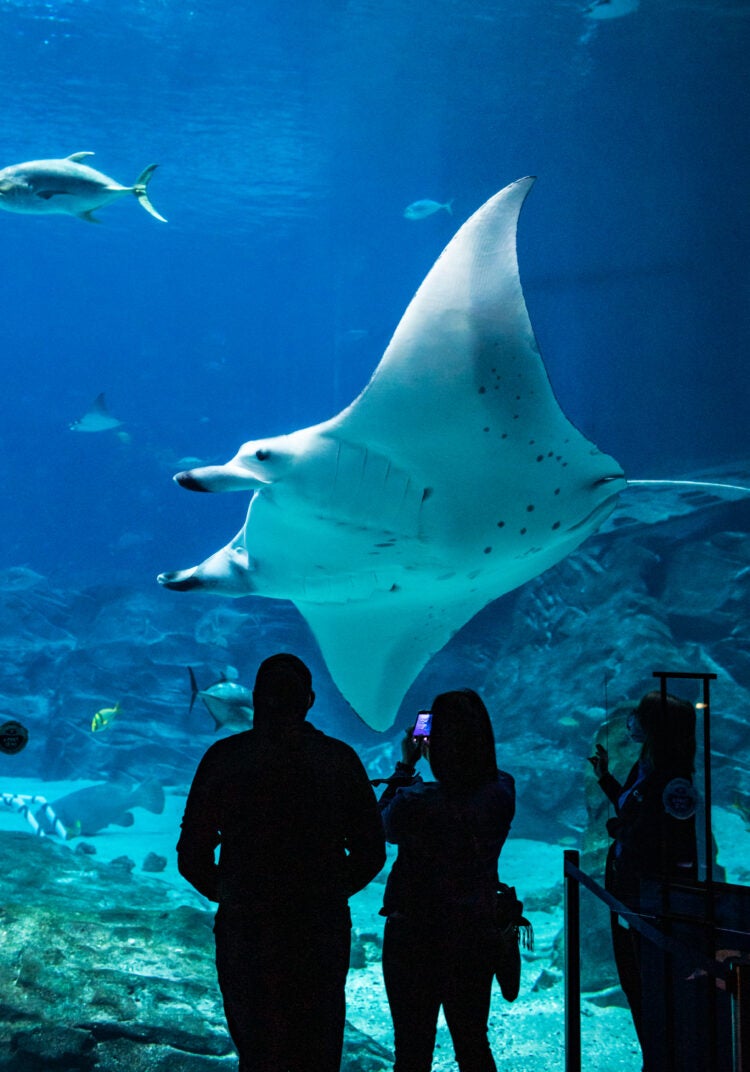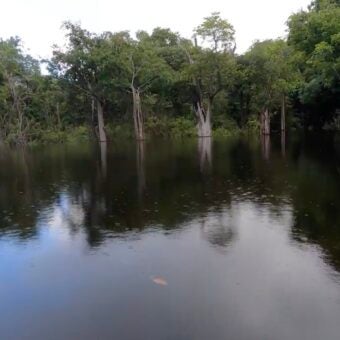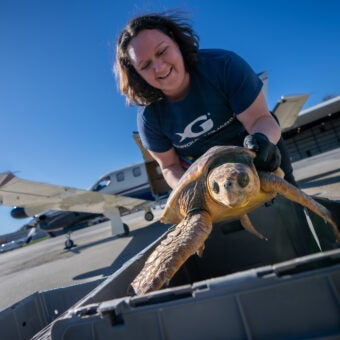ATLANTA () – Tech nerds always want in on beta testing of the hottest new advances. They’d be envious of the manta rays at Georgia Aquarium, who recently got to try out new IMU (Inertial Measurement Unit) tags designed to track the migration patterns and seasonality of giant oceanic manta rays that live in the waters near Canaveral Shoals, Florida.
Jake Levenson, a marine biologist with the Bureau of Ocean Energy Management (BOEM) said, “tapping the unique skills and resources of the experts at Georgia Aquarium was crucial to the development, design and testing of the IMU tags in a controlled environment before BOEM uses them in the wild.” One of BOEM’s functions is to oversee dredging ocean sand for beach nourishment, shore protection and wetland restoration. The tagging giant ocean mantas will help BOEM understand their habits to avoid disturbing these endangered fish during dredging operations.
with the collaboration between BOEM and Georgia Aquarium focused on innovative techniques to track manta rays. After a series of obstacles to gathering migratory information due to inclement weather, the COVID-19 pandemic, and difficulty both applying IMU tags and getting them to adhere to the manta rays, the team focused their attention fully to inventing open-access techniques and technologies to study manta rays. Georgia Aquarium is the only aquarium in the United States that provides care for manta rays, and the mantas living at the aquarium helped test their prototypes.
“Testing the IMU tags at Georgia Aquarium provided a controlled environment that allowed the engineers to improve on the tag and attachment design with each deployment to hopefully one day result in success in the field,” said Katelyn Herman, manager of conservation programs at Georgia Aquarium and a researcher on the project. In-house trials with the Aquarium’s manta rays led to a series of improvements to address floatation, orientation and improved hydrodynamic flow.
When suction using compressed air failed to adhere the tags, the team turned to Vaseline, Manuka honey, and finally peanut butter(!) to improve retention times. “Peanut butter gave us the best results by far, enabling retention for up to four hours,” Herman said.
The open-source IMU tag design will provide a resource for future research to understand this elusive and important endangered species, Herman said. “Georgia Aquarium’s manta rays played a big part in assisting the ongoing conservation efforts of their species.”
To learn more about Georgia Aquarium’s conservation work, click here.
###
Georgia Aquarium is one of the largest aquariums in the world with more than 11 million gallons of water and tens of thousands of animals. Located in Atlanta, Ga., it is a premier animal care and research facility that is accredited by the Association of Zoos and Aquarium, the Alliance of Marine Mammal Parks and Attractions, Humane Certified by American Humane, and a Class R research institution certified by the USDA. By providing guests with unparalleled opportunities to learn about marine life, Georgia Aquarium is dedicated to unlocking the ocean’s wonder for all, providing transformative experiences that inspire a shared responsibility for conserving our aquatic ecosystems.





